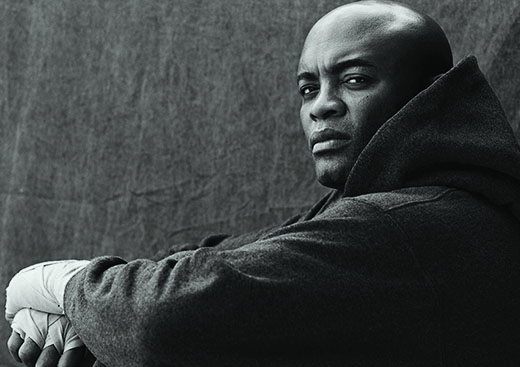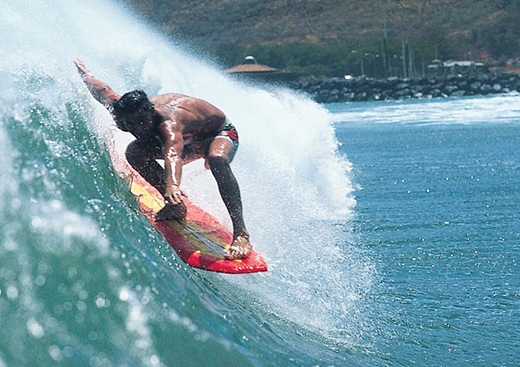Avant-garde tennis player, shoot-from-the-hip sports commentator, SoHo art hipster—whatever you want to call him, there’s really only one concise way to describe John McEnroe, and that’s: John McEnroe. From day one he shocked tennis fans with his take-no-prisoners attitude, his outrageous hair, and above all, his seething passion for the game of tennis. Brash, unapologetic, with a dash of tortured genius, there was nothing like him on a tennis court before he arrived, and there has never been a personality quite like “Johnny Mac’s” ever since.
McEnroe screamed onto the scene in 1977 at age 18, an unknown who made it to the Wimbledon semi-finals, and reached theWimbledon Men’s Singles final in 1980, going on to win 77 career singles titles, ranked at No. 1 for four consecutive years, from 1981 to 1984. His 6-1, 6-1, 6-2 defeat of Jimmy Connors to win Wimbledon in 1984 is considered by many to be the most perfect tennis match ever played.
Yet his wins, impressive as they were, were often overshadowedby his wild and unpredictable personality—it was during his1981 first-round Wimbledon match against Tom Gullikson that Johnny Mac would have his most infamous outburst, yelling,“You cannot be serious!” at the umpire. In Taming the Talent , the1990 biography of McEnroe, author Richard Evans wrote that Amadeus actor Tom Hulce studied footage of McEnroe for his role as the eccentric composer Mozart.
As a player, though, his eccentricity served him well. Early on in his career, McEnroe flipped the script, doing something with his game that would forever change his destiny—serving with his back to the net. It was a tactic nobody would ever have thought to teach, yet it was incredibly effective, enabling McEnroe to pull cloak-and-dagger moves on the court that would leave his opponents stunned. Interestingly, he developed the serve not so much as a game strategy, but because his back was bothering him, “and I found that that motion alleviated some pain,” McEnroe says. Being a left-handed player also gave him an automatic advantage—some say that “lefty” players have greater spatial awareness and creativity when looking at the court. And McEnroe was nothing if not creative in his style.
When McEnroe was at his peak, the game of tennis was very different to how it is today. The rackets were wooden. The game moved at a snail’s pace compared to the 150 mph serves of today. And there was far less money at stake. But what players lacked in speed, brutality and multimillion dollar endorsements, they made up for with personality. McEnroe was part of a generation of players including the volatile Connors, and the cool and collected Bjorn Borg, who heralded the beginning of a new age in spectator sports—the age of sports entertainment. Watching McEnroe play his nemesis Borg was something akin to the WWE, complete with dramatic highs and tragic lows, an Ice Man versus Maverick type battle, to borrow from the Top Gun vernacular. “Well, unlike the WWE, our matches certainly were not predetermined, and I am biased, but it was an exciting time,” says McEnroe.
Borg and McEnroe could not have been more equal in game, nor more opposite in style. Where baseliner Borg rarely spoke on court (nothing could rattle the so-called “Swedish ice cube”), the serve-and-volleyer McEnroe was known for challenging umpires and officials, and for smashing his rackets.
When he was at his best, his temper made him play better. Which is unusual. Most people, when rattled, play worse. But Mac was the exception to every rule. While his unpredictable and willful nature made him unpopular with some (fans occasionally booed him), there was a poetry to McEnroe’s game.
Being left-handed, and a natural rule-breaker, meant that McEnroe saw possibilities on the court where others saw nothing. He created angles that didn’t seem to exist, serving in ways that actually changed the game, making the court seem bigger than it actually was. McEnroe had the ability to hit the ball lightly, even when guys were smacking it hard at him. And that was the art of McEnroe—inventing angles with the softness of his hand, making the impossible seem easy. When he was defeated by Ivan Lendl in the 1984 French Open and later at the 1985 U.S. Open, the game of tennis shifted. Among the pitfalls of being a champion so young is that, as McEnroe points out, “you think it happens all of the time.” Until it doesn’t. Tennis entered the age of power over poetry, and McEnroe would, over a period of several years, transition into the next phase of his life.
“The void is great when you leave a sport you love, so working as a commentator is a small way of being a part of it,” says McEnroe, who is today known as a professional commentator as much as an athlete. He’s made tennis exciting to listen to, and even become a beloved ambassador for the game, partially, perhaps, because he knows exactly what the players are going through. “I try to put myself into the heads of the players out there and try to figure out ways each can get an edge,” he says, explaining his analyst’s role. “I explain it in a way that’s understandable for new fans and, hopefully, educational for the tennis fanatic.”
Away from tennis, he was already building his sizeable art collection. McEnroe had been introduced to the 1980s SoHo art scene by his friend, the fellow tennis player Vitas Gerulaitis. Andy Warhol painted a portrait of him with his first wide, the actress Tatum O’Neal (they married in 1986 and divorced in 1994). He knew very little about art before that, but found himself drawn to the photorealism of artists like Chuck Close and Richard Estes, as well as figurative works, because “I like to see the artists hands.” He became friends with artist and tennis fan Eric Fischl, with whom he exchanged tennis lessons in return for art lessons. He built a museum-class art collection while pursuing his other passion, rock music, jamming with his buddies Eddie Van Halen, Eric Clapton, Metallica’s Lars Ulrich and David Gilmour of Pink
A husband and father of six, now in his mid-50s, McEnroe remains a polarizing character, albeit one who has mellowed, and who is known for his philanthropy as much as for his fiery character. Most recently, he has started his own tennis academy in his home city of New York, trying, as he says, to bring the “buzz back to the sport of tennis.” Mac became an icon during the period in which all sports were transforming into “sports entertainment,” and was an integral part of that transition. Whether he is on good or bad behavior, McEnroe delivers each and every time. On and off the court, Johnny Mac remains, forever, mesmerizing.
—





